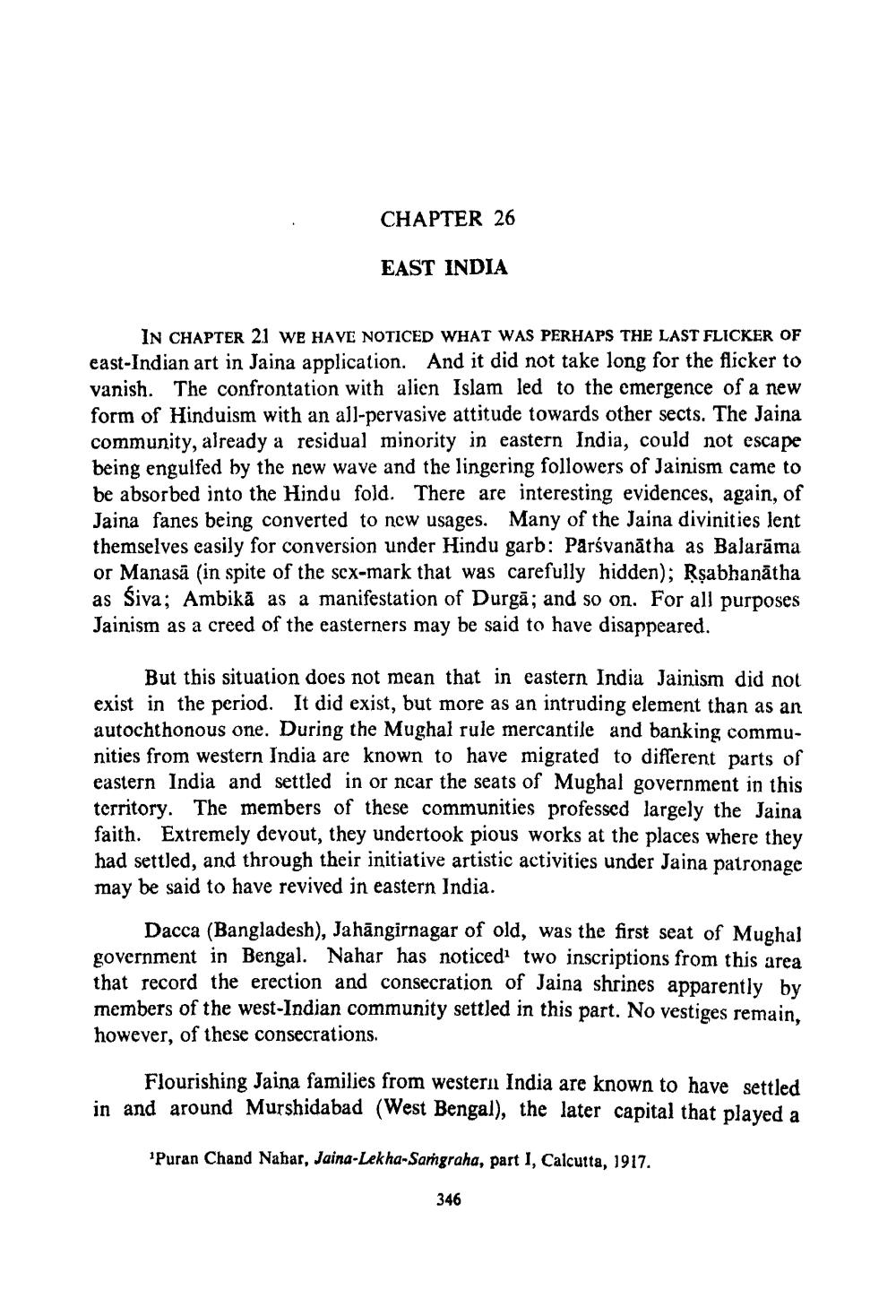________________
CHAPTER 26
EAST INDIA
IN CHAPTER 21 WE HAVE NOTICED WHAT WAS PERHAPS THE LAST FLICKER OF east-Indian art in Jaina application. And it did not take long for the flicker to vanish. The confrontation with alien Islam led to the emergence of a new form of Hinduism with an all-pervasive attitude towards other sects. The Jaina community, already a residual minority in eastern India, could not escape being engulfed by the new wave and the lingering followers of Jainism came to be absorbed into the Hindu fold. There are interesting evidences, again, of Jaina fanes being converted to new usages. Many of the Jaina divinities lent themselves easily for conversion under Hindu garb: Parśvanatha as Balarama or Manasa (in spite of the sex-mark that was carefully hidden); Rṣabhanatha as Siva; Ambika as a manifestation of Durga; and so on. For all purposes Jainism as a creed of the easterners may be said to have disappeared.
But this situation does not mean that in eastern India Jainism did not exist in the period. It did exist, but more as an intruding element than as an autochthonous one. During the Mughal rule mercantile and banking communities from western India are known to have migrated to different parts of eastern India and settled in or near the seats of Mughal government in this territory. The members of these communities professed largely the Jaina faith. Extremely devout, they undertook pious works at the places where they had settled, and through their initiative artistic activities under Jaina patronage may be said to have revived in eastern India.
Dacca (Bangladesh), Jahangirnagar of old, was the first seat of Mughal government in Bengal. Nahar has noticed1 two inscriptions from this area that record the erection and consecration of Jaina shrines apparently by members of the west-Indian community settled in this part. No vestiges remain, however, of these consecrations.
Flourishing Jaina families from western India are known to have settled in and around Murshidabad (West Bengal), the later capital that played a
'Puran Chand Nahar, Jaina-Lekha-Samgraha, part I, Calcutta, 1917.
346




